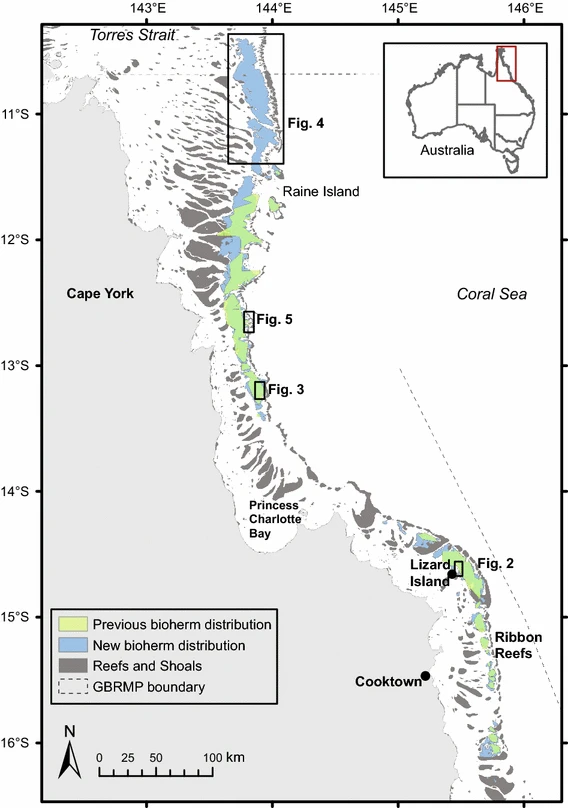EARTH SCIENCE | BIOLOGICAL CLASSIFICATION | PLANTS | MACROALGAE (SEAWEEDS) | GREEN ALGAE
Type of resources
Topics
Keywords
Contact for the resource
Provided by
Years
-

Sediment derived from the decomposition of Halimeda algae is a major contributor to the tropical back-reef carbonate depositions. Halimeda bioherms occur extensively on the northern Great Barrier Reef (GBR), Australia. This dataset represents the most complete, high-resolution spatial mapping of the extent of northern GBR Halimeda bioherms, based on airborne lidar and multibeam echosounder bathymetry data. Three distinct morphological sub-types are described: reticulate, annulate, and undulate. The northern GBR bioherms cover an area of 6095 km2, three times larger than previous estimates.
-
-- Layton et al. Chemical microenvironments within macroalgal assemblages: implications for the inhibition of kelp recruitment by turf algae. Limnology & Oceanography. DOI:10.1002/lno.11138 -- Kelp forests around the world are under increasing pressure from anthropogenic stressors. A widespread consequence is that in many places, complex and highly productive kelp habitats have been replaced by structurally simple and less productive turf algae habitats. Turf algae habitats resist re-establishment of kelp via recruitment inhibition; however little is known about the specific mechanisms involved. One potential factor is the chemical environment within the turf algae and into which kelp propagules settle and develop. Using laboratory trials, we illustrate that the chemical microenvironment (O2 concentration and pH) 0.0–50 mm above the benthos within four multispecies macroalgal assemblages (including a turf-sediment assemblage and an Ecklonia radiata kelp-dominated assemblage) are characterised by elevated O2 and pH relative to the surrounding seawater. Notably however, O2 and pH were significantly higher within turf-sediment assemblages than in kelp-dominated assemblages, and at levels that have previously been demonstrated to impair the photosynthetic or physiological capacity of kelp propagules. Field observations of the experimental assemblages confirmed that recruitment of kelp was significantly lower into treatments with dense turf algae than in the kelp-dominated assemblages. We demonstrate differences between the chemical microenvironments of kelp and turf algae assemblages that correlate with differences in kelp recruitment, highlighting how degradation of kelp habitats might result in the persistence of turf algae habitats and the localised absence of kelp.
-
This dataset has been superseded by https://metadata.imas.utas.edu.au/geonetwork/srv/eng/catalog.search#/metadata/0145df96-3847-474b-8b63-a66f0e03ff54 (Victorian Statewide Marine Habitat Map 2023). The Victorian seabed habitat map documents the distribution of broad benthic habitat types in Victorian Coastal Waters to the State’s 3 nautical mile jurisdictional limit. The map was created using a top-down modelling process whereby habitat descriptors were assigned using seafloor structure and biological information derived from multibeam sonar (Victorian Marine Habitat Mapping Project), bathymetric LiDAR (Future Coasts program) and observations from underwater video. Identification of benthic biota, to the lowest discernible taxonomic level, and substrate characteristics were recorded according to the Victorian Towed Video Classification scheme (Ierodiaconou et al. 2007).
 IMAS Metadata Catalogue
IMAS Metadata Catalogue